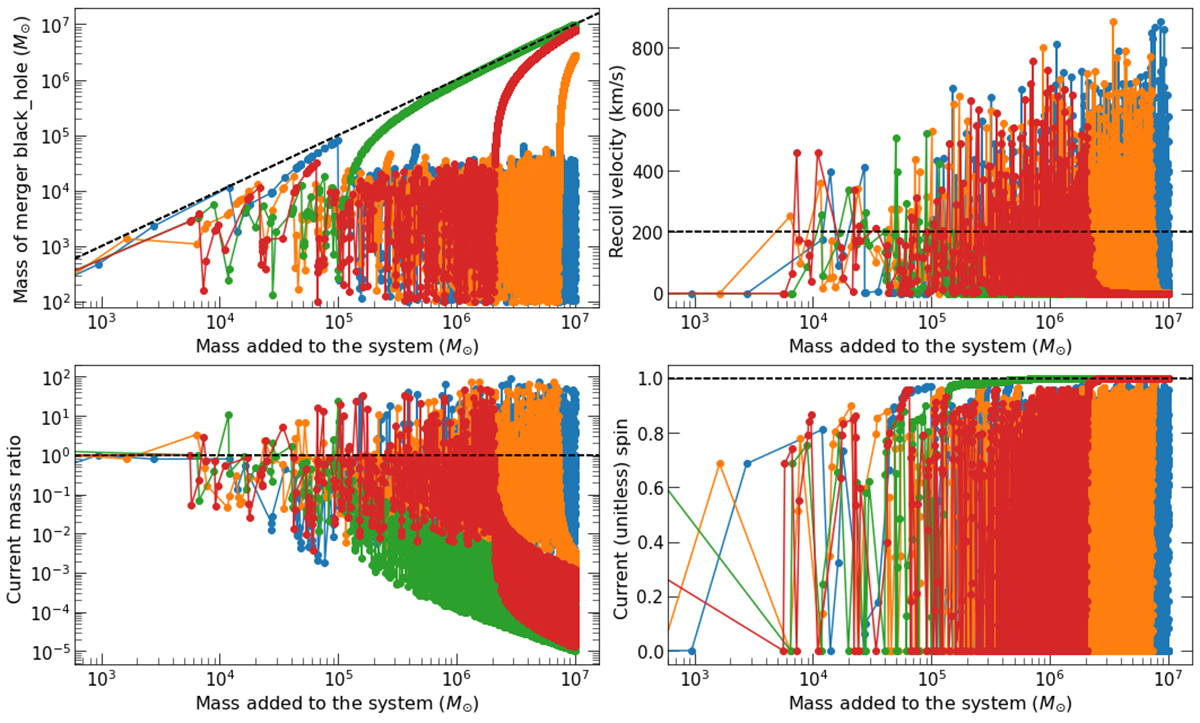Fig. 12.

Download original image
Growth of supermassive BH by mergers in four simulations of one example case, where the initial primary mass is drawn from the BH mass function of β = 1.13, the spin-orbit misalignment angle is randomly drawn from 0 − 10°, and Vesc = 200 km s−1. The sequence of mergers is represented along the x axis by the accumulated mass of the merging BHs from the initial primary mass to a total of 107 M⊙. Top left: the mass of the merged BH after each merger. Top right: the recoil velocity in comparison to the escape velocity. Bottom left: the mass ratio (when it is larger than unity, the primary and secondary exchange roles). Bottom right: the spin of the primary BH. When Vrecoil > Vesc the SMBH is ejected and a new primary is chosen. This is more likely to happen in the early mergers, when the mass ratio tends to be high. Three of the SMBHs manage to eventually grow while one fails (blue). Growth is practically guaranteed once the SMBH mass exceeds 105 M⊙, while the secondary merging BHs are limited to ≤104 M⊙ such that the mass ratio drops below 0.1.
Current usage metrics show cumulative count of Article Views (full-text article views including HTML views, PDF and ePub downloads, according to the available data) and Abstracts Views on Vision4Press platform.
Data correspond to usage on the plateform after 2015. The current usage metrics is available 48-96 hours after online publication and is updated daily on week days.
Initial download of the metrics may take a while.


